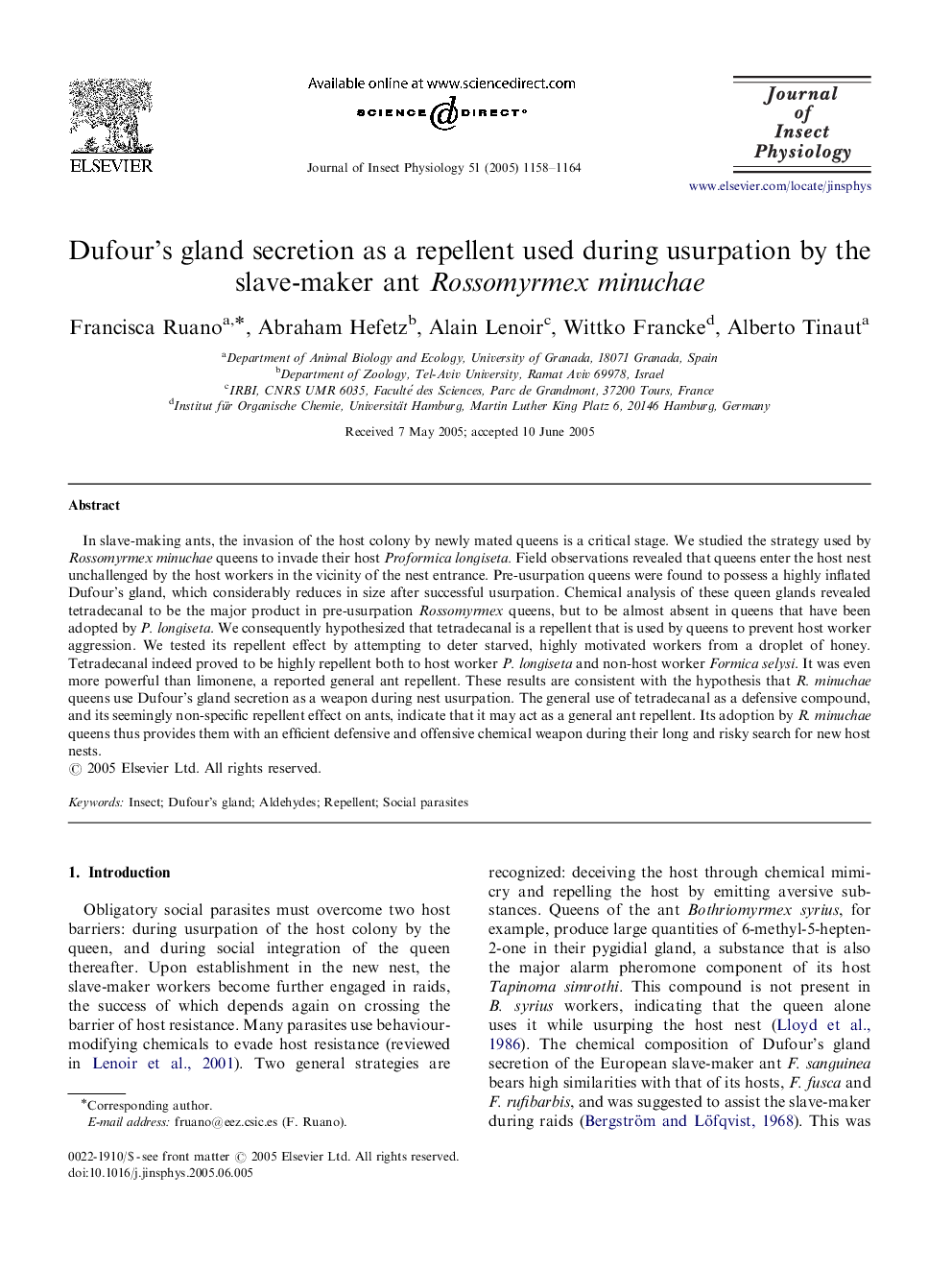| کد مقاله | کد نشریه | سال انتشار | مقاله انگلیسی | نسخه تمام متن |
|---|---|---|---|---|
| 9147520 | 1165428 | 2005 | 7 صفحه PDF | دانلود رایگان |
عنوان انگلیسی مقاله ISI
Dufour's gland secretion as a repellent used during usurpation by the slave-maker ant Rossomyrmex minuchae
دانلود مقاله + سفارش ترجمه
دانلود مقاله ISI انگلیسی
رایگان برای ایرانیان
کلمات کلیدی
موضوعات مرتبط
علوم زیستی و بیوفناوری
علوم کشاورزی و بیولوژیک
دانش حشره شناسی
پیش نمایش صفحه اول مقاله

چکیده انگلیسی
In slave-making ants, the invasion of the host colony by newly mated queens is a critical stage. We studied the strategy used by Rossomyrmex minuchae queens to invade their host Proformica longiseta. Field observations revealed that queens enter the host nest unchallenged by the host workers in the vicinity of the nest entrance. Pre-usurpation queens were found to possess a highly inflated Dufour's gland, which considerably reduces in size after successful usurpation. Chemical analysis of these queen glands revealed tetradecanal to be the major product in pre-usurpation Rossomyrmex queens, but to be almost absent in queens that have been adopted by P. longiseta. We consequently hypothesized that tetradecanal is a repellent that is used by queens to prevent host worker aggression. We tested its repellent effect by attempting to deter starved, highly motivated workers from a droplet of honey. Tetradecanal indeed proved to be highly repellent both to host worker P. longiseta and non-host worker Formica selysi. It was even more powerful than limonene, a reported general ant repellent. These results are consistent with the hypothesis that R. minuchae queens use Dufour's gland secretion as a weapon during nest usurpation. The general use of tetradecanal as a defensive compound, and its seemingly non-specific repellent effect on ants, indicate that it may act as a general ant repellent. Its adoption by R. minuchae queens thus provides them with an efficient defensive and offensive chemical weapon during their long and risky search for new host nests.
ناشر
Database: Elsevier - ScienceDirect (ساینس دایرکت)
Journal: Journal of Insect Physiology - Volume 51, Issue 10, October 2005, Pages 1158-1164
Journal: Journal of Insect Physiology - Volume 51, Issue 10, October 2005, Pages 1158-1164
نویسندگان
Francisca Ruano, Abraham Hefetz, Alain Lenoir, Wittko Francke, Alberto Tinaut,